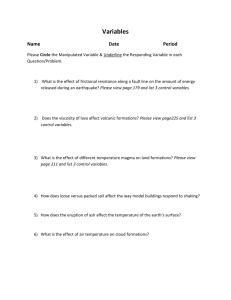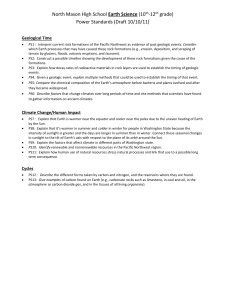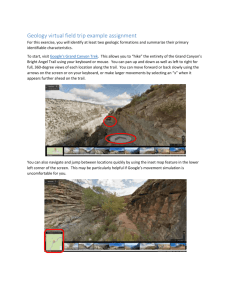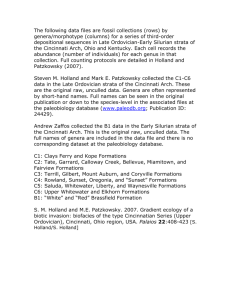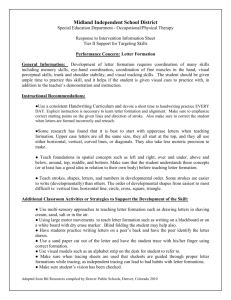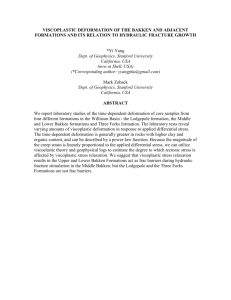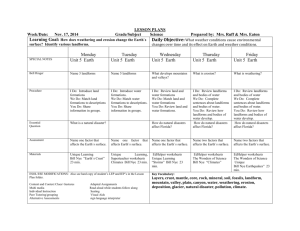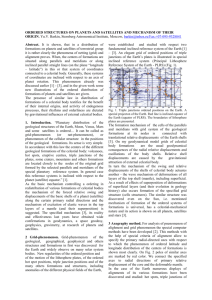Day 1 Basic Land Formations Review
advertisement
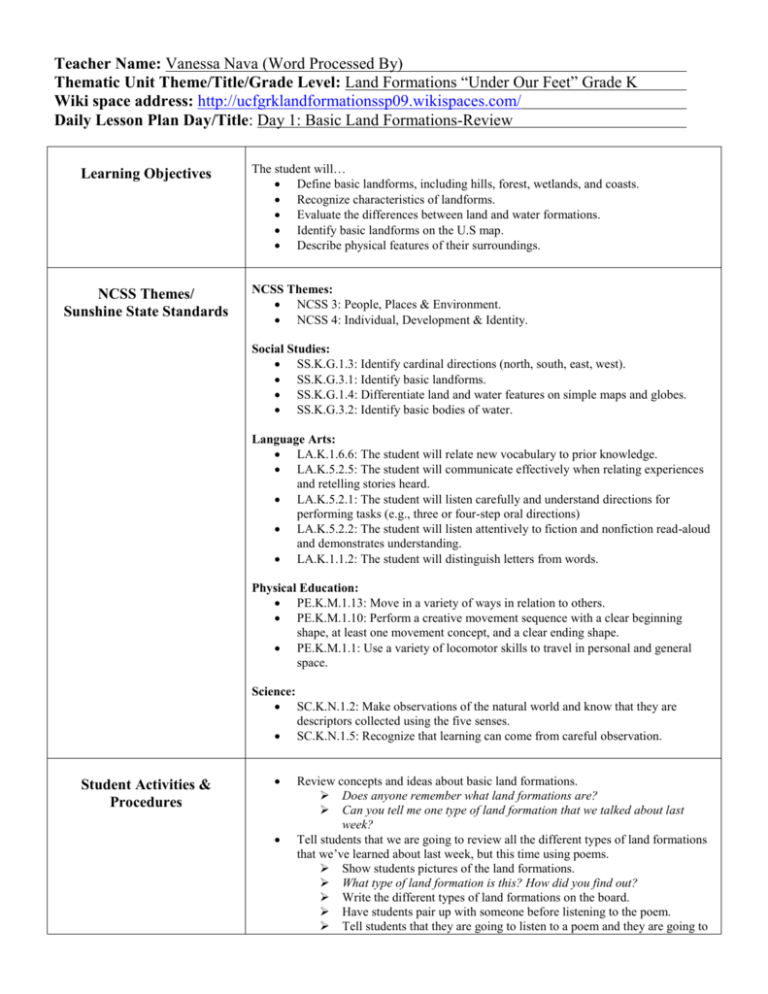
Teacher Name: Vanessa Nava (Word Processed By) Thematic Unit Theme/Title/Grade Level: Land Formations “Under Our Feet” Grade K Wiki space address: http://ucfgrklandformationssp09.wikispaces.com/ Daily Lesson Plan Day/Title: Day 1: Basic Land Formations-Review Learning Objectives NCSS Themes/ Sunshine State Standards The student will… Define basic landforms, including hills, forest, wetlands, and coasts. Recognize characteristics of landforms. Evaluate the differences between land and water formations. Identify basic landforms on the U.S map. Describe physical features of their surroundings. NCSS Themes: NCSS 3: People, Places & Environment. NCSS 4: Individual, Development & Identity. Social Studies: SS.K.G.1.3: Identify cardinal directions (north, south, east, west). SS.K.G.3.1: Identify basic landforms. SS.K.G.1.4: Differentiate land and water features on simple maps and globes. SS.K.G.3.2: Identify basic bodies of water. Language Arts: LA.K.1.6.6: The student will relate new vocabulary to prior knowledge. LA.K.5.2.5: The student will communicate effectively when relating experiences and retelling stories heard. LA.K.5.2.1: The student will listen carefully and understand directions for performing tasks (e.g., three or four-step oral directions) LA.K.5.2.2: The student will listen attentively to fiction and nonfiction read-aloud and demonstrates understanding. LA.K.1.1.2: The student will distinguish letters from words. Physical Education: PE.K.M.1.13: Move in a variety of ways in relation to others. PE.K.M.1.10: Perform a creative movement sequence with a clear beginning shape, at least one movement concept, and a clear ending shape. PE.K.M.1.1: Use a variety of locomotor skills to travel in personal and general space. Science: SC.K.N.1.2: Make observations of the natural world and know that they are descriptors collected using the five senses. SC.K.N.1.5: Recognize that learning can come from careful observation. Student Activities & Procedures Review concepts and ideas about basic land formations. Does anyone remember what land formations are? Can you tell me one type of land formation that we talked about last week? Tell students that we are going to review all the different types of land formations that we’ve learned about last week, but this time using poems. Show students pictures of the land formations. What type of land formation is this? How did you find out? Write the different types of land formations on the board. Have students pair up with someone before listening to the poem. Tell students that they are going to listen to a poem and they are going to use their body to represent the different land formations. Resources/ Materials Assessment Read the poems out loud, show pictures during the reading. Help students to use their hands and bodies to represent the different land formations. Explain to the students that they are going to read the poems again to identify and label the different land formations in the U.S map. Provide students a map and pictures of land formations. Explain to the students that the N, S, E, and W on the map represent the cardinal points. Read the poems out loud and emphasize the last line of the poem related to the state where the landform is located. Use the map board to help students find the states. Tell the students to circle the state mentioned in the poem Then, have students match and glue the land formation images with the states that they have previously circled on the map. Help students make connections between land formations and the state of Florida. What do you notice on your map? What type of land formation do we have in the state of Florida? Have you ever seen a forest? Have you ever visited another state and seen any type of land formation? Last, explain students that there are more types of land formations and they are going to be learning about those during the week. Read aloud cardboards (poems/pictures) Worksheets (maps, pictures) Map board Pre Assessment: Students will discuss and review previous concepts on land formations. Performance Assessment: Show pictures of land formations. Read the poems out loud. Have students pair up, using their hands and bodies to represent the different land formations. Post Assessment: Map construction – have students identify and label states where we can find land formations. Exceptionalities ESOL Accommodations: Visuals Aids (pictures, map) Cooperative Learning Vocabulary (board) Gifted/ Talented Students: Cooperative Learning Peer mentor ESE Accommodations: Visual Aids (pictures, map) Cooperative Leaning Slow instruction Video or audio Discussion Notes Homework: have students write their own poem about land formations and share it with the class. Have students think about a place they have visited and saw a type of land formation. They can either draw or just tell about it. Name: ______________________ Find where are located these land formations on the U.S Map. Cut and glue them on the map.
